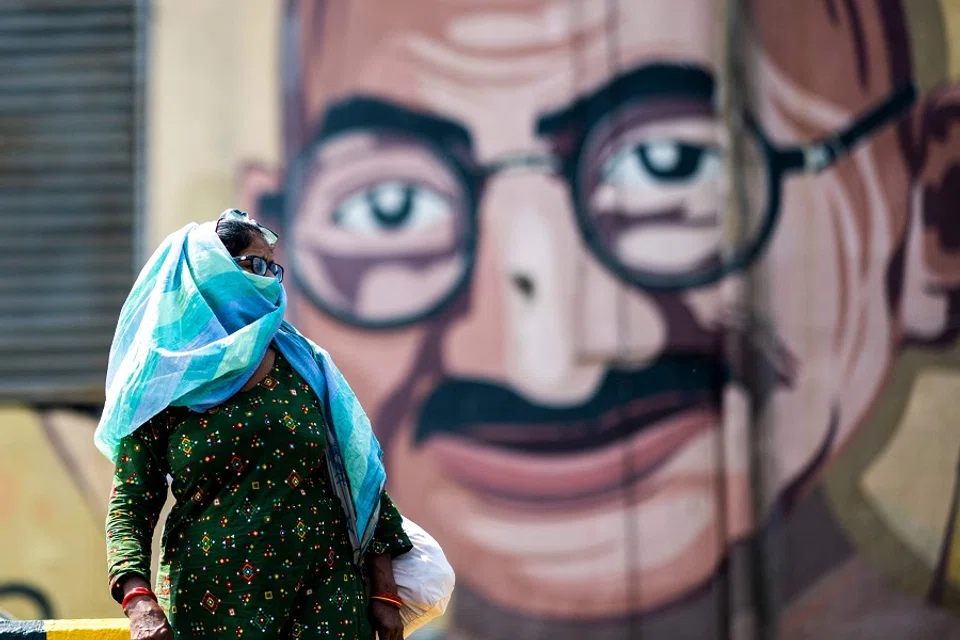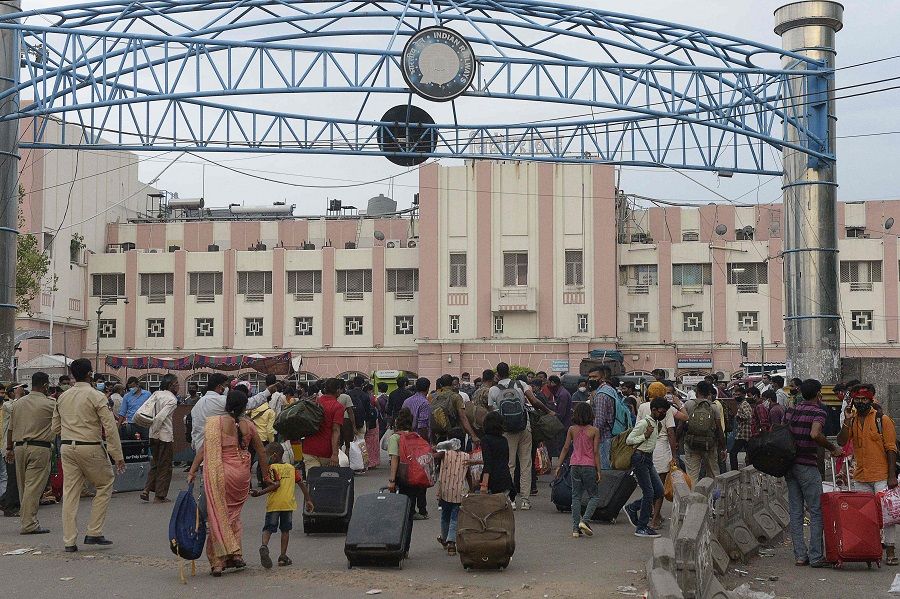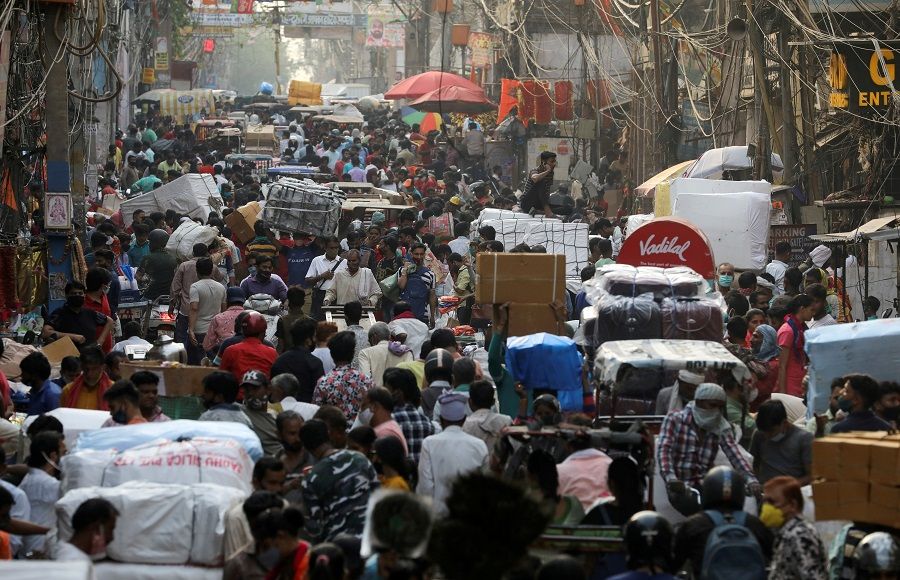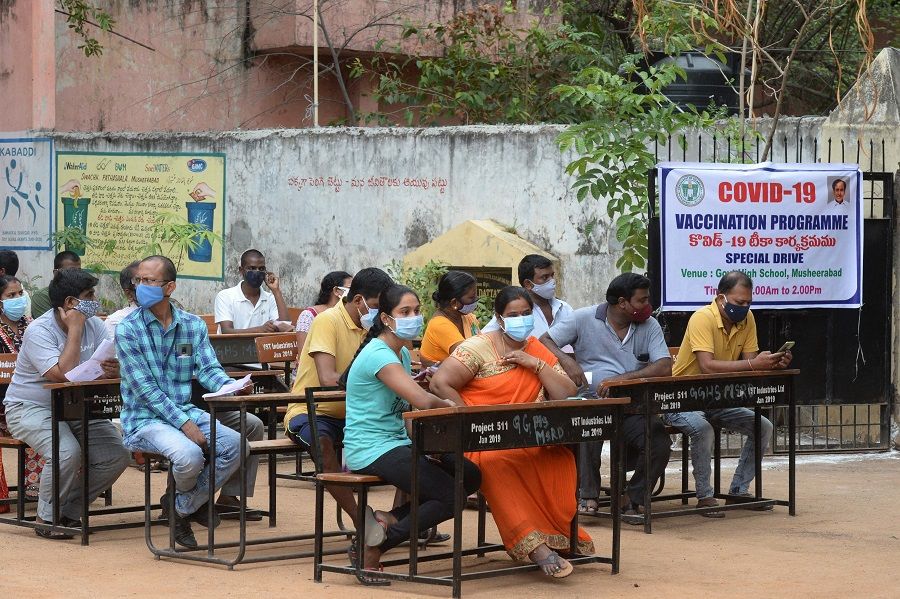Indian researcher on the pandemic: It's a tragedy but India will continue to do its part

Heading into its second year in 2021, the Covid-19 pandemic has magnified in scale and pace since its outbreak in Wuhan in 2019. No country has been spared although the impact has varied from country to country.
The damage caused by the pandemic has highlighted the failure of the existing international order and its institutions, in areas such as their ineffective handling of the pandemic and the looming concerns over the search for an antidote. While vaccines have been produced, gaps in the demand-supply chain have led to the global health crisis remaining unresolved. It is clear that the Covid-19 pandemic is not a country's problem, but a "tragedy of the global commons".
The global disorder is a result of three main factors. First, overwhelmed healthcare systems compounded by increasing distress to the global economy. Second, a re-evaluation of the role of international institutions in the international system as the World Health Organization (WHO)'s handling of the Covid crisis is questioned. Third, with countries such as the US and Australia calling for an investigation into the origins of the coronavirus, there are new security concerns for the possible threat of biological weapons.
India for the first time in 16 years, has to accept foreign aid in terms of medical supplies from the US, UK, UAE, Russia, Singapore, France, Thailand, Taiwan and others - resulting in a shift in India's foreign policy.

Like most affected countries, the surge in infections in India since the first case was reported in 2020 was mainly due to the importation of cases from abroad. However, what has caused alarm is that in a growing number of cases, the transmission route could not be traced. While India did succeed in managing the first wave by imposing the world's largest nationwide lockdown, the second wave since April 2021 has seen it falling to its nadir. With cases rising to over 28 million cases including those caused by the mutant strain B.1. 617 variant, India emerged as an epicentre of the pandemic with a recorded death toll of more that 300,000, just behind the US and Brazil. ( NB: As of 10 June, India's total fatalities number 359,676.)
An unprecedented surge in the daily cases led to the collapse of the healthcare system, resulting in the lack of oxygen supplies and intensive care unit beds, which has been compounded by the spread of black and white fungus infections. While India's public and private industries have increased oxygen production to meet the demand, India for the first time in 16 years, has to accept foreign aid in terms of medical supplies from the US, UK, UAE, Russia, Singapore, France, Thailand, Taiwan and others - resulting in a shift in India's foreign policy. Even though the cumulative Covid-19 vaccine doses administered to date have crossed the 200 million mark under the current vaccination drive, India's vaccine supply still needs to be boosted to meet the demands of 1.3 billion people.
In defence of India's situation
India's second wave has garnered global attention but one needs to take into consideration certain key factors. First, its huge population of 1.3 billion. Second, despite it being a "developing country", India's rate of infection and most importantly the fatality rate only witnessed a spike in the second wave. And India is not the only country with high fatalities, as the highest rate is still the US, despite its lower population and developed nation status.
Also, according to data in a Times of India article, although India is the second worst-hit nation in the world, at 1.12% (1 death per 100 cases) India still ranks the lowest in case of fatality rate when compared to other countries such as Italy (2.99%), UK (2.87%), Brazil (2.79%), Germany (2.39%), the US (1.78%) and many others. Therefore, to say that India's second wave is an exceptional case of Covid-19 and more specifically, suggesting that the crisis is caused by an 'Indian variant' of the virus, rather than calling it the "B.1. 617 mutant variant" is not only an assessment error but also unethical, as no one calls the coronavirus a "Wuhan virus" anymore. (NB: With WHO's recent announcement that Covid-19 variants would be named by Greek letters, the B.1.617 mutant variant is now also known as the Delta strain.)

However, what indeed makes India an exception is the fact that the pandemic has been compounded by both traditional and non-traditional security challenges. Amid the pandemic, India has been hit by four severe cyclones - Amphan and Nisarga in 2020 and Tauktae and Yaas in 2021. Besides, India was engaged at the borders with China given the Eastern Ladakh crisis since April/May 2020 which resulted in the Galwan Valley incident. These incidents also distracted India from handling the health crisis. Hence, after taking stock of regional and global factors, the following assessments can be made on future geopolitical development.
Regional and global impact
At the regional level, that is in Asia, India will be engaged on two fronts - with China on one hand and Pakistan on the other - leading to regional instability. In terms of China, with the disputed border emerging as a flashpoint and complete disengagement still to be achieved even after 11 rounds of military-level talks, the border issue will continue to be a destabiliser. Escalation of the security dilemma between India and China is inevitable despite temporary fixes for peace.
With Pakistan, the dispute over Kashmir will be further compounded by terrorism. The China-Pakistan "all-weather friendship" will also loom large especially with the development of the China-Pakistan Economic Corridor. India would also be concerned with what is seen as China's intrusion into India's regional strategic space through the former's building of port and infrastructure facilities in Sri Lanka (Hambantota), Pakistan (Gwadar), Nepal and Bangladesh.
Given these imperatives, India would want to further boost its preparedness by upgrading its capabilities, as seen in the rapid infrastructure build-up in the high-altitudes of Eastern Ladakh and Arunachal Pradesh. Besides, India's ties with the US, in particular, will experience an upswing, with the view towards building a more strategic and comprehensive partnership. This is evident from the signing of the last foundational agreement, the Basic Exchange and Cooperation Agreement (BECA) in 2020, promoting interoperability between the two militaries while making provision for the sale and transfer of high-end technologies. Further, India's engagement in the Indo-Pacific region will also be boosted as the Quad gains traction. Greater Indian participation in the Quad with Australia, Japan and the US will reinforce India's strong foothold in the Indo-Pacific region, thus providing a counterbalance to China's growing footprint in the Indian Ocean.
...despite its own Covid crisis and the travel ban, India has played a vital role in providing medical assistance to countries abroad, including to both its immediate and extended neighbourhood by lifting its export ban on drugs such as hydroxychloroquine and paracetamol.

India's role in medical diplomacy should not be discounted
At the global level, India is thought of as a "global pharma hub". According to an Indian Brand Equity Foundation (IBEF) report, India ranks third in the world for pharmaceutical production by volume and 14th by value, making it the largest provider of generic drugs globally. For instance, India's drug and pharmaceutical export stood at US$22.15 billion in FY21 (until February 2021). It is also often cited that the Indian pharmaceutical sector is expected to grow to US$100 billion while the medical device market is expected to grow to US$25 billion by 2025.
In terms of vaccines, India is poised to take the centre stage in global vaccine manufacturing. According to the same IBEF report, the Indian pharmaceutical sector supplies over 50% of global demand for various vaccines including 40% of generic demand in the US and 25% of all medicine in the UK. India's vaccine diplomacy will continue to play a greater role under the Quad, in boosting vaccine manufacturing to benefit the entire Indo-Pacific region. In fact, the virtual Quad leaders' summit held in March 2021 included the launch of the "Quad Vaccine Experts Group". What also adds to India playing a bigger role is its geo-strategic location which makes it a critical player in the global supply chain.
What makes India a critical actor are two contributing factors: First, despite its own Covid crisis and the travel ban, India has played a vital role in providing medical assistance to countries abroad, including to both its immediate and extended neighbourhood by lifting its export ban on drugs such as hydroxychloroquine and paracetamol. For instance, as reported in a Hindustan Times article, last year, more than 80 million hydroxychloroquine tablets were supplied to 24 countries through commercial contracts including the US, UK, Russia, France, Spain and the Netherlands; large quantities of paracetamol tablets were supplied to 52 countries including Italy, Sweden and Singapore; and in some cases, both medicines were supplied.
...while the second wave of the pandemic has caused one of India's worst crises to date, one cannot deny that against the odds, New Delhi has been engaged in playing an active global role in fighting the health crisis.

India has also sent consignments worth Rs 280 million to 29 countries across the South Asia region, the Indian Ocean region, the Gulf (Kuwait), Central Asia (Kazakhstan, Armenia, Tajikistan, Ukraine) and Dominican Republic and Ecuador and another six African countries, as reported in a Hindustan Times article. India's Armed Forces have played an active role in carrying out India's overseas mission. For instance, Indian Air Force in cooperation with Indian Army launched an 18-hour Operation Sanjeevani to deliver 6.2 tonnes of essential medicines and hospital consumables to the Maldives, while Indian Navy under Mission Sagar carried medical teams, consignments of essential medicines and food supplies to Maldives, Mauritius, Madagascar, Comoros and Seychelles.
More significantly, unlike other major countries and despite having a population of 1.3 billion, India played a proactive role in providing vaccines to 95 countries as of May 2021, with Bangladesh being the top recipient. In addition, as reported in The Indian Express, until April, India sent 80.75 lakh* doses as a gift, 165.24 lakh doses as part of the Covax mechanism under the aegis of the Global Alliance for Vaccines and Immunisation, and an estimated 339.67 lakh doses as part of commercial deals.
To India, the pandemic is interlinked whether it is at the regional or global level. India's second wave seems to have reached its peak and the crisis has mellowed or shown signs of fading away. However, with vaccines from the US (Pfizer and Moderna) and Russia (Sputnik), these will surely provide a boost to India's current vaccine supplies, adding to its Covishield and Covaxin vaccines.
Therefore, while the second wave of the pandemic has caused one of India's worst crises to date, one cannot deny that against the odds, New Delhi has been engaged in playing an active global role in fighting the health crisis. Rather than adopting an individualistic approach, India adopted a collective approach in fighting the pandemic. It has in that sense, made itself an exception in fighting the pandemic.
*Lakh is a unit in the Indian numbering system equivalent to 100,000.
